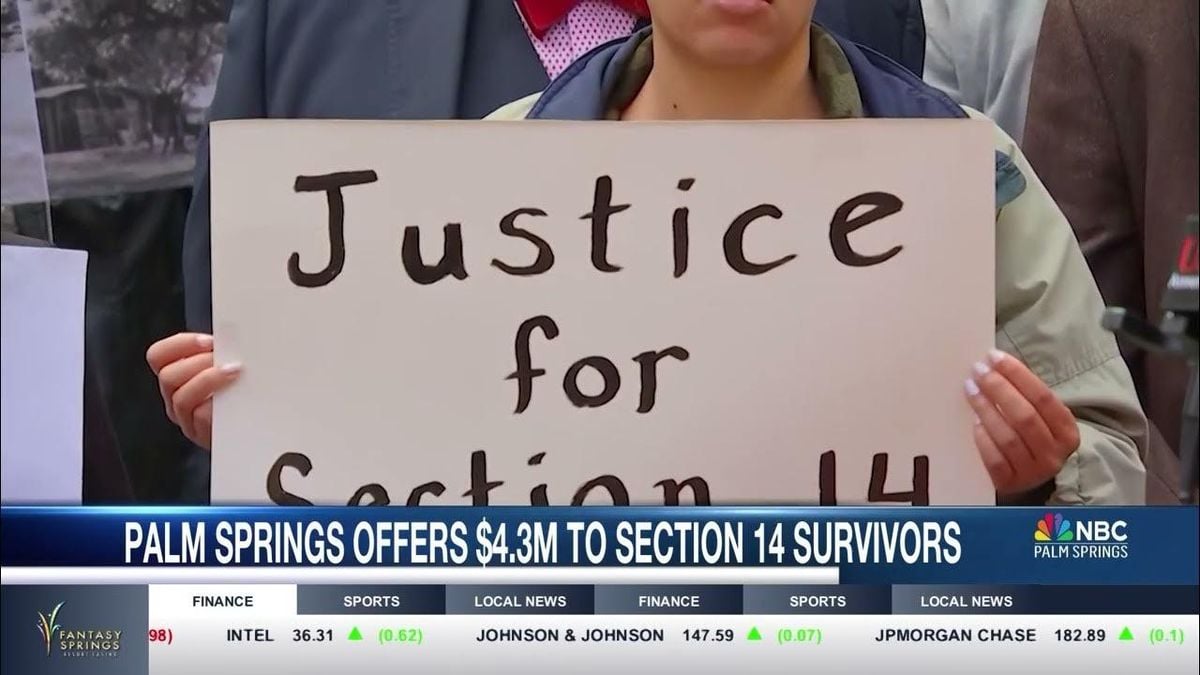
Black and Latino families who were displaced from their homes more than 50 years ago have taken significant steps toward justice with the recent announcement of a tentative settlement agreement reached with the city of Palm Springs, California. The proposed settlement, amounting to nearly $27 million, is seen as not just financial compensation but also as recognition of the historical wrongs faced by these communities.
This landmark case centers around the urban renewal efforts of the 1960s, during which the city razed the historically Black Section 14 neighborhood, ostensibly to make room for commercial development. Residents allege they were forcibly removed with little or no notice, losing not only their homes but also personal property and community ties. An investigation conducted by the state back then found evidence of civil disregard for the residents’ rights, though it did not substantiate claims of criminal activity during the evictions.
The agreement includes several components aimed at addressing the lasting impact of the evictions. Of the $27 million, $5.9 million is designated as direct cash compensation to the former residents and their descendants, who can prove their ties to the neighborhood. The remaining funds will be allocated to housing projects and economic development initiatives, which are expected to benefit the community over the next ten years.
“We have been fighting for a long time to tell our story,” said Margarita Genera, one of the former residents, who lived with her family in Section 14. The settlement is seen not only as financial relief but also as an acknowledgment of the trauma and dislocation experienced by the families.
The City Council of Palm Springs is slated to vote on this settlement during its upcoming public meeting, marking the culmination of efforts by the group known as the Palm Springs Section 14 Survivors. This group has long called for reparations for the wrongs their community faced due to urban renewal policies aimed at beautifying the city at the expense of its Black and Latinx residents.
All eyes are now on this council meeting, as both proponents and critics of the settlement prepare their arguments. Supporters argue it’s high time the city acknowledges the injustices of the past and gives the former residents of Section 14 the compensation they deserve. On the flip side, some community members question whether it is fair for the city to bear the financial responsibility for actions taken so long ago.
Areva Martin, the attorney representing the survivors, emphasized the societal obligations involved: “This was about acknowledging the harm done. This was a community told they were undeserving; they were labeled as nuisances.” Martin’s sentiments resonate deeply with those who felt displaced from their homes and community without regard for their humanity.
The retracing of these painful histories is more than just about rectification; it ties colors to the fabric of community and identity. For many of those involved, the settlement is also about ensuring the legacy of Section 14 lives on, and plans for monuments and naming parks after the former residents are also part of the comprehensive package.
This settlement could position Palm Springs as one of the few municipalities to proactively address reparations, following the lead of places like Evanston, Illinois, which established a reparations fund to support housing and community initiatives.
Looking back, the demographic shifts over the decades have changed the face of Palm Springs. With the land’s former owners, the Agua Caliente Band of Cahuilla Indians, initially leasing land to residents, the socio-economic dynamics have evolved dramatically. The city’s recent efforts to remedy past injustices highlight the broader national conversation surrounding reparations, underscoring societal accountability and racial healing.
Looking forward, this settlement could pave the way for similar initiatives across the nation as communities reckon with their histories. There’s momentum building around the need for reparative justice, igniting discussions of historical redress across multiple cities seeking to engage their own complicated racial histories.
For the former residents and their families, the hope now is not just about financial compensation but also about healing — reclaiming their stories and histories, and ensuring their communities never have to endure similar fates again.
Give Feedback. How was this article?
You can help us improve by leaving feedback specific to
this content.
How would you rate the quality of this article?
Terrible

Which of the following feelings did this article evoke in
you?
Multiple Selection
How easy was it for you to find the information you were
looking for in this article?
Super Hard

Artificial intelligence is increasingly used in content
creation. What percentage of this article do you estimate was generated by AI?
How can we improve this article (or our articles in
general)?
Send Feedback
Thanks for the feedback
Thank you for supporting us to improve ourselves with your
feedback.





